Understanding the Importance of Protecting Wooden Floors from Table Leg Scratches
Understanding the Importance of Protecting Wooden Floors from Table Leg Scratches
Wooden floors are a popular choice for many homes and businesses due to their natural beauty and durability. they are susceptible to damage from table leg scratches, making it crucial to take steps to protect them.
Table leg scratches can cause a variety of damages to wooden floors, including discoloration, chipping, and even gouging of the wood. The finish on the floor can also be scratched or worn away, leaving the wood exposed to further damage. These damages not only affect the appearance of the floor but can also reduce its value.
The aesthetic and value of wooden floors can be significantly impacted by table leg scratches. Scratches can be unsightly and detract from the overall look of the floor. Additionally, they can be difficult and expensive to repair, further reducing the value of the floor.
To protect wooden floors from table leg scratches, it is important to use furniture pads or glides on the legs of tables and chairs. These pads or glides reduce friction between the furniture and the floor, preventing scratches. Regularly checking the condition of the pads or glides and cleaning the floor to remove dirt and debris are also essential.
By taking these preventive measures, home and business owners can ensure that their wooden floors remain in good condition, retain their aesthetic value, and maintain their overall value.
Identifying the Vulnerability of Your Wooden Floor to Table Leg Scratches
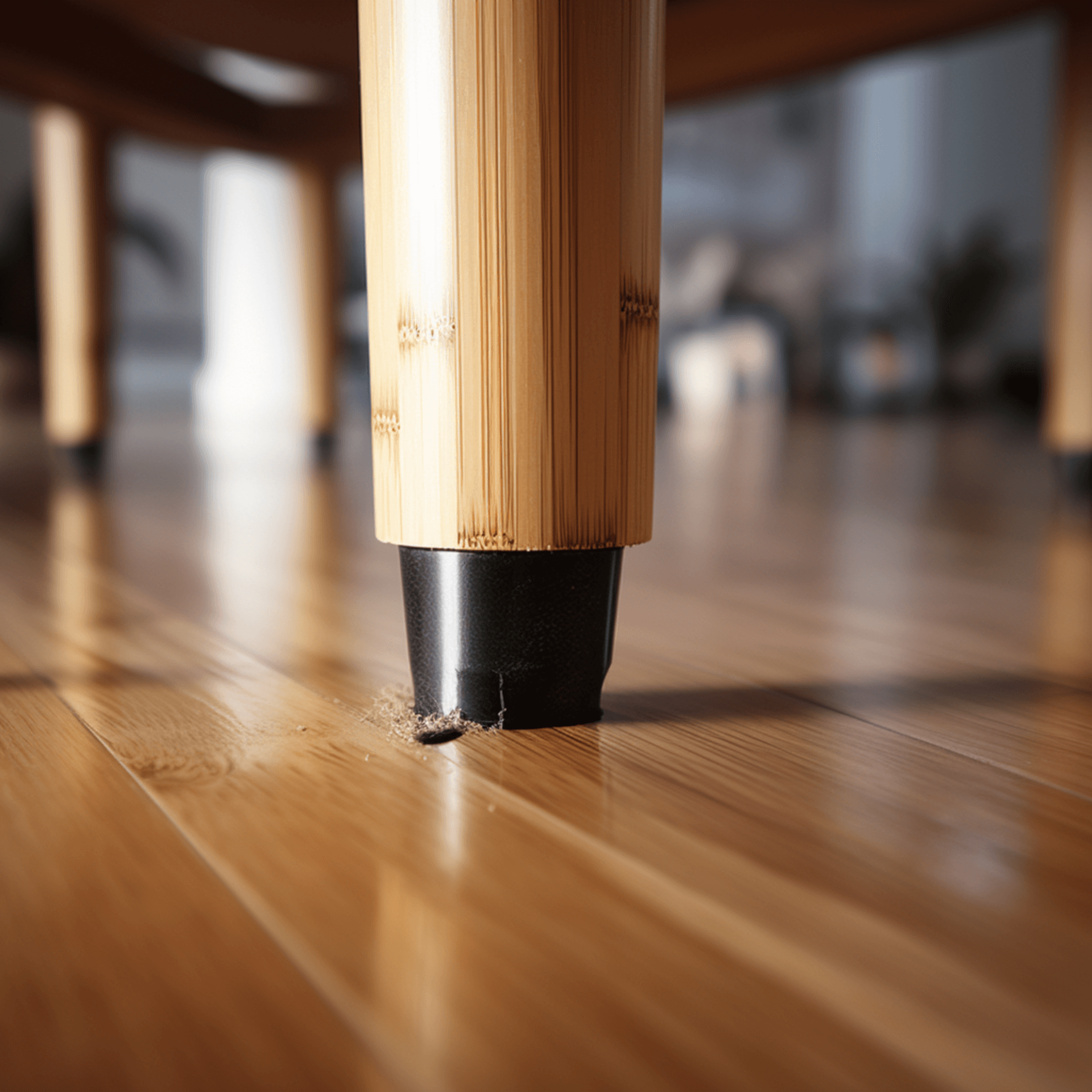
Wooden floors vary in their vulnerability to table leg scratches depending on factors such as the type of wood, hardness, and finish.
Softwood floors, such as pine, are generally more susceptible to scratches than hardwood floors, such as oak. Softwood floors have a lower Janka hardness rating, indicating that they are softer and more prone to damage. Hardwood floors, on the other hand, have a higher Janka hardness rating, making them more resistant to scratches and dents.
The finish of the floor also plays a role in its vulnerability to scratches. Floors with a glossy finish are more likely to show scratches than those with a matte finish. The glossy finish reflects light and makes scratches more visible, while a matte finish can help to hide minor scratches. Additionally, floors with a wax finish are more susceptible to scratches than those with a polyurethane finish, as the wax can be easily scratched or worn away.
The type of wood used in the floor can also affect its susceptibility to scratches. Harder woods, such as oak and maple, are more resistant to scratches than softer woods, such as pine and cedar. Additionally, some woods, such as teak and mahogany, are naturally more resistant to scratches than others.
To identify the vulnerability of your wooden floor to table leg scratches, consider the type of wood, hardness, and finish. Softwood floors with a glossy finish are more likely to be scratched, while hardwood floors with a matte finish are more resistant. Harder woods, such as oak and maple, are generally less susceptible to scratches than softer woods. By understanding these factors, you can take appropriate measures to protect your wooden floor from table leg scratches.
The Role of Table Legs in Causing Scratches on Wooden Floors

Metal table legs are the most likely to cause scratches on wooden floors. Metal is a hard material that can easily scratch the surface of the wood. Additionally, metal legs can be sharp and can cause gouges in the wood if they are not properly protected. The potential risks of using metal table legs on wooden floors include deep scratches, gouges, and discoloration of the wood. These damages can be unsightly and difficult to repair, affecting the overall appearance and value of the floor.
Plastic table legs are less likely to cause scratches than metal legs, but they can still cause damage. Plastic is a softer material than metal, but it can still scratch the surface of the wood if it is not properly padded. Additionally, plastic legs can be sharp and can cause gouges in the wood if they are not properly protected. The potential risks of using plastic table legs on wooden floors include minor scratches, discoloration, and the potential for the plastic to wear down or break over time.
Wooden table legs are the least likely to cause scratches on wooden floors. Wood is a softer material than metal or plastic, and it is less likely to cause scratches. wooden legs can still cause damage if they are not properly protected. The potential risks of using wooden table legs on wooden floors include minor scratches, discoloration, and the potential for the wood to wear down or splinter over time.
To minimize the risks of table leg scratches on wooden floors, it is important to use furniture pads or glides on the legs of tables and chairs. These pads or glides reduce friction between the furniture and the floor, preventing scratches. Regularly checking the condition of the pads or glides and replacing them as needed is also essential to maintain the protection of the wooden floor.
Selecting the Right Table Legs to Minimize Scratches on Your Wooden Floor
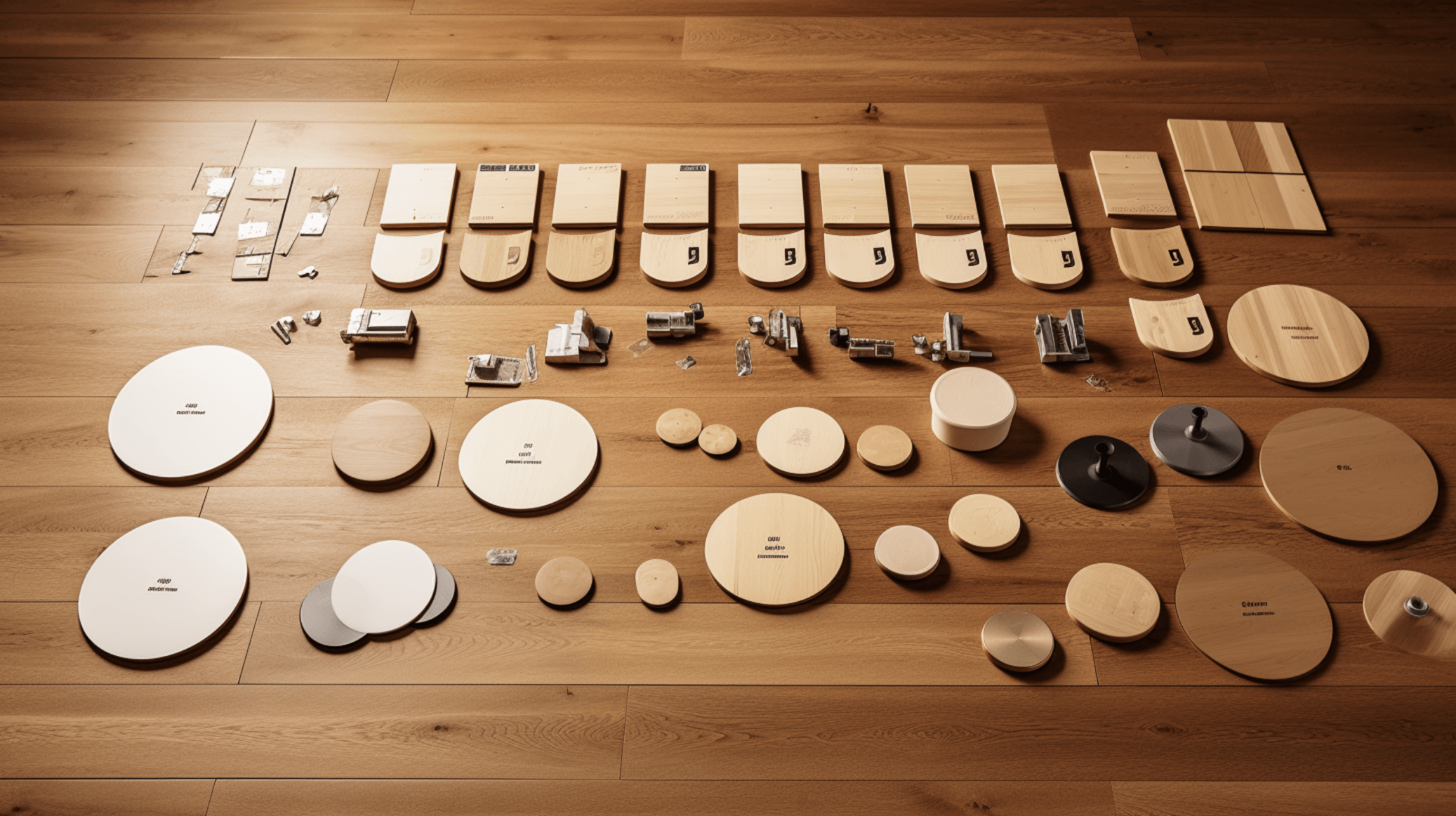
When selecting table legs to minimize scratches on your wooden floor, there are several factors to consider. The material of the legs, the design of the legs, and the type of flooring all play a role in determining the risk of scratches.
The material of the table legs is the most important factor to consider. Metal table legs are the most likely to cause scratches on wooden floors. Metal is a hard material that can easily scratch the surface of the wood. Plastic table legs are less likely to cause scratches than metal legs, but they can still cause damage. Wooden table legs are the least likely to cause scratches on wooden floors.
The design of the table legs can also influence the risk of scratches. Table legs with sharp edges or corners are more likely to cause scratches than those with rounded edges. Additionally, table legs with a glossy finish are more likely to show scratches than those with a matte finish.
The type of flooring can affect the risk of scratches as well. Softwood floors, such as pine, are generally more susceptible to scratches than hardwood floors, such as oak. The finish of the floor can also play a role in its vulnerability to scratches. Floors with a wax finish are more susceptible to scratches than those with a polyurethane finish.
To protect your wooden floor from scratches, it is recommended to use table legs made of wood or plastic with rounded edges and a matte finish. Additionally, using furniture pads or glides on the legs can help reduce friction and prevent scratches. Regularly checking the condition of the pads or glides and cleaning the floor to remove dirt and debris are also essential. By considering these factors and taking preventive measures, you can minimize the risk of scratches and maintain the beauty and value of your wooden floor.
Effective Strategies to Prevent Table Leg Scratches on Wooden Floors
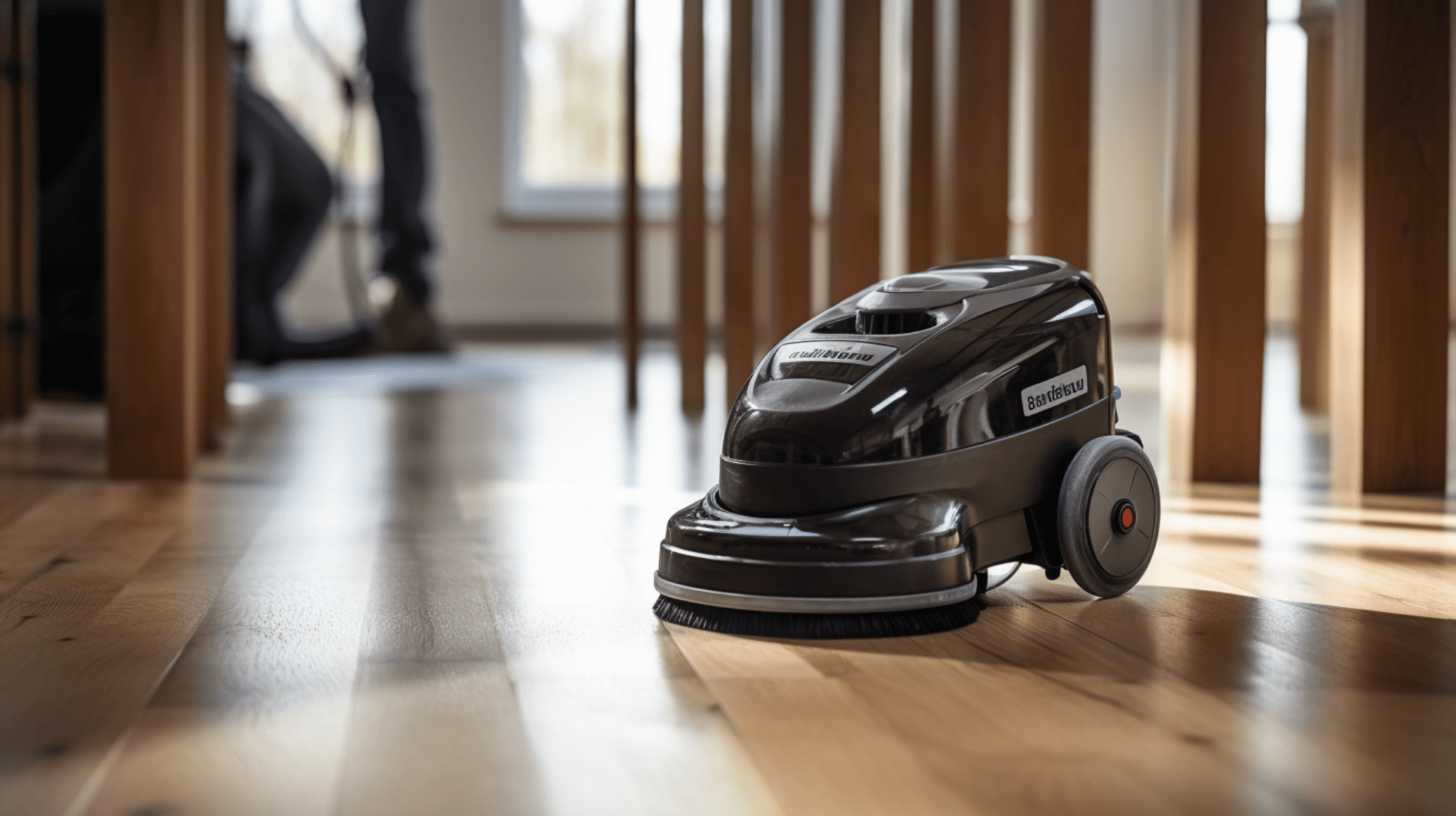
To protect wooden floors from table leg scratches, there are several best practices that home and business owners can follow. Furniture pads or glides should be used on the legs of tables and chairs to reduce friction between the furniture and the floor, preventing scratches. Regularly checking the condition of the pads or glides and replacing them as needed is also essential to maintain the protection of the wooden floor.
Regular maintenance is also important in preventing table leg scratches. Vacuuming or sweeping the floor regularly to remove dirt and debris can help reduce the risk of scratches. Additionally, furniture should be moved regularly to prevent the same area of the floor from being scratched repeatedly.
Furniture placement also plays a role in preventing scratches. Furniture should be placed away from walls and doorways to reduce the risk of scratches. Additionally, furniture should be placed on rugs or mats to provide an extra layer of protection.
By following these best practices, home and business owners can ensure that their wooden floors remain in good condition and retain their aesthetic value. Taking preventive measures and regularly maintaining the floor can help reduce the risk of table leg scratches and maintain the beauty and value of the wooden floor.
Exploring Materials for Protecting Wooden Floors from Table Leg Scratches
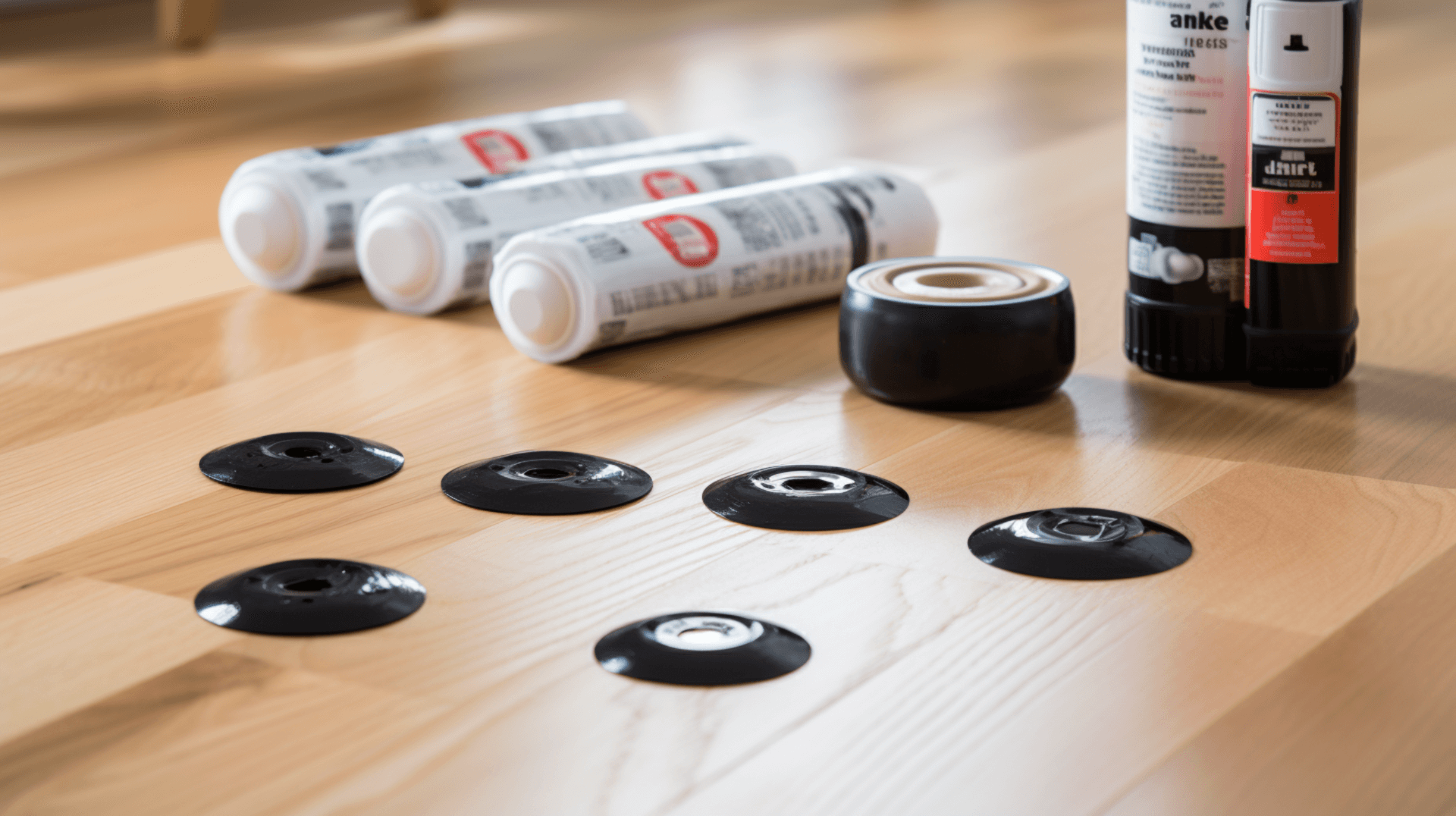
Furniture pads, rugs, and coasters are all effective materials for protecting wooden floors from table leg scratches. Furniture pads, made of felt, rubber, or plastic, are the most common and effective way to reduce friction and prevent scratches. They provide a cushion between the furniture and the floor, minimizing the risk of damage. Rugs and mats can also be used to provide an extra layer of protection and can be easily moved when needed. Coasters, on the other hand, offer a cushioned surface for furniture legs, reducing the risk of scratches.
When choosing protective materials for your wooden floors, consider the type of flooring you have. Rubber pads are best for hardwood floors, while felt pads are better suited for softwood floors. Additionally, consider the size and shape of the furniture legs. Choose pads or coasters that match the size and shape of the legs to ensure proper protection. It is also important to consider the design of the protective material. Furniture pads with rounded edges are less likely to cause scratches than those with sharp edges. Additionally, furniture pads with a matte finish are less likely to show scratches than those with a glossy finish.
By selecting the appropriate protective materials and considering the specific needs of your wooden floors, you can effectively prevent table leg scratches and maintain the beauty and value of your flooring.
DIY Solutions for Protecting Your Wooden Floor from Table Leg Scratches

DIY solutions for protecting wooden floors from table leg scratches are an affordable and effective way to keep your floor looking its best. There are several methods for creating table leg protectors, all of which require minimal materials and tools.
One of the simplest DIY solutions is to use furniture pads or glides. These pads are made of felt, rubber, or plastic and provide a cushion between the furniture and the floor, reducing friction and preventing scratches. They come in a variety of sizes and shapes, so you can find the perfect fit for your furniture legs. Additionally, they should be placed around the edges of each room to leave room for expansion and should be secured in place with netting if required.
Another DIY solution is to use coasters. Coasters are small discs that can be placed under the legs of furniture to provide a cushioned surface and reduce the risk of scratches. They are available in a variety of materials, including wood, plastic, and metal, and can be easily customized to fit the size and shape of your furniture legs.
Rugs and mats are also effective for protecting wooden floors from table leg scratches. Placing rugs or mats under furniture can provide an extra layer of protection and can be easily moved when needed. It is important to choose rugs or mats with a non-slip backing to prevent them from sliding on the floor.
When implementing these DIY solutions, it is important to consider the type of flooring and the size and shape of the furniture legs. Rubber pads are best for hardwood floors, while felt pads are better suited for softwood floors. Additionally, regularly checking the condition of the pads, coasters, or rugs and replacing them as needed is essential to maintain the protection of the wooden floor.
Professional Solutions for Protecting Your Wooden Floor from Table Leg Scratches
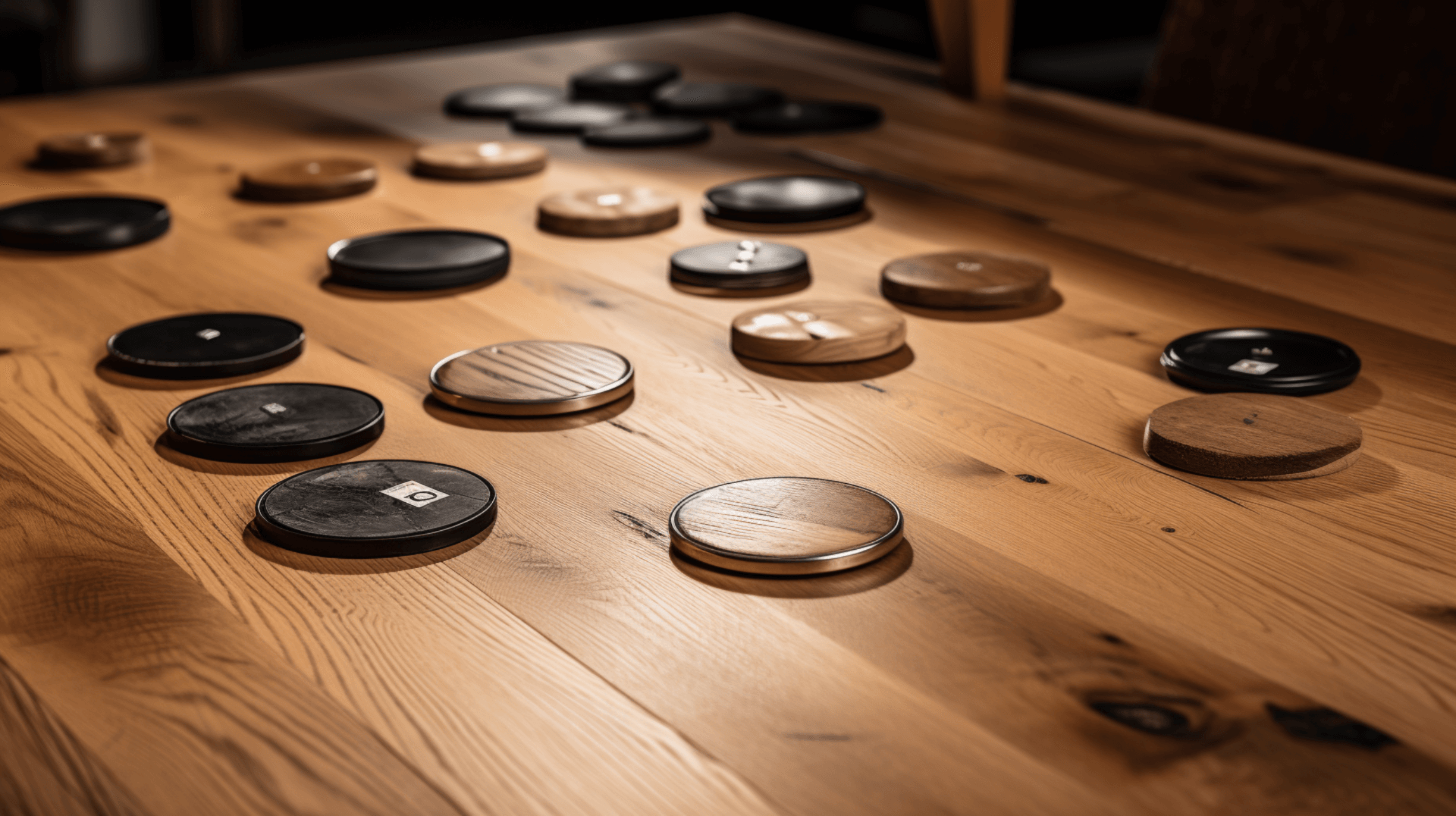
Professional solutions for protecting wooden floors from table leg scratches are an effective way to keep your floor looking its best. Professional floor treatments, such as waxing, polishing, and sealing, can help prevent scratches and keep the floor looking new. These treatments create a protective layer that reduces friction and minimizes the risk of scratches. Waxing and polishing can also restore the floor’s original shine and luster, enhancing its overall appearance.
In addition to floor treatments, professional furniture pads and coasters can be used to provide an extra layer of protection. These pads and coasters are specifically designed to cushion the furniture legs and reduce friction, preventing scratches on the wooden floor. They are made of high-quality materials that are durable and long-lasting, ensuring effective protection for your floor.
Furthermore, when insulating a suspended timber floor, it is important to insulate the entire floor area to the same level. This helps reduce issues of cold bridging and unwanted moisture movement in voids, which can potentially lead to damage and scratches on the wooden floor. Professional installation methods, such as insulating the floor from above by removing the floorboards, can also help protect the floor from table leg scratches.
By opting for professional solutions, you can ensure that your wooden floor is properly protected and maintained. Professional floor treatments, furniture pads, and installation methods are tailored to the specific needs of your floor, providing optimal protection and minimizing the risk of scratches.
Repairing Table Leg Scratches on Wooden Floors: A Comprehensive Guide
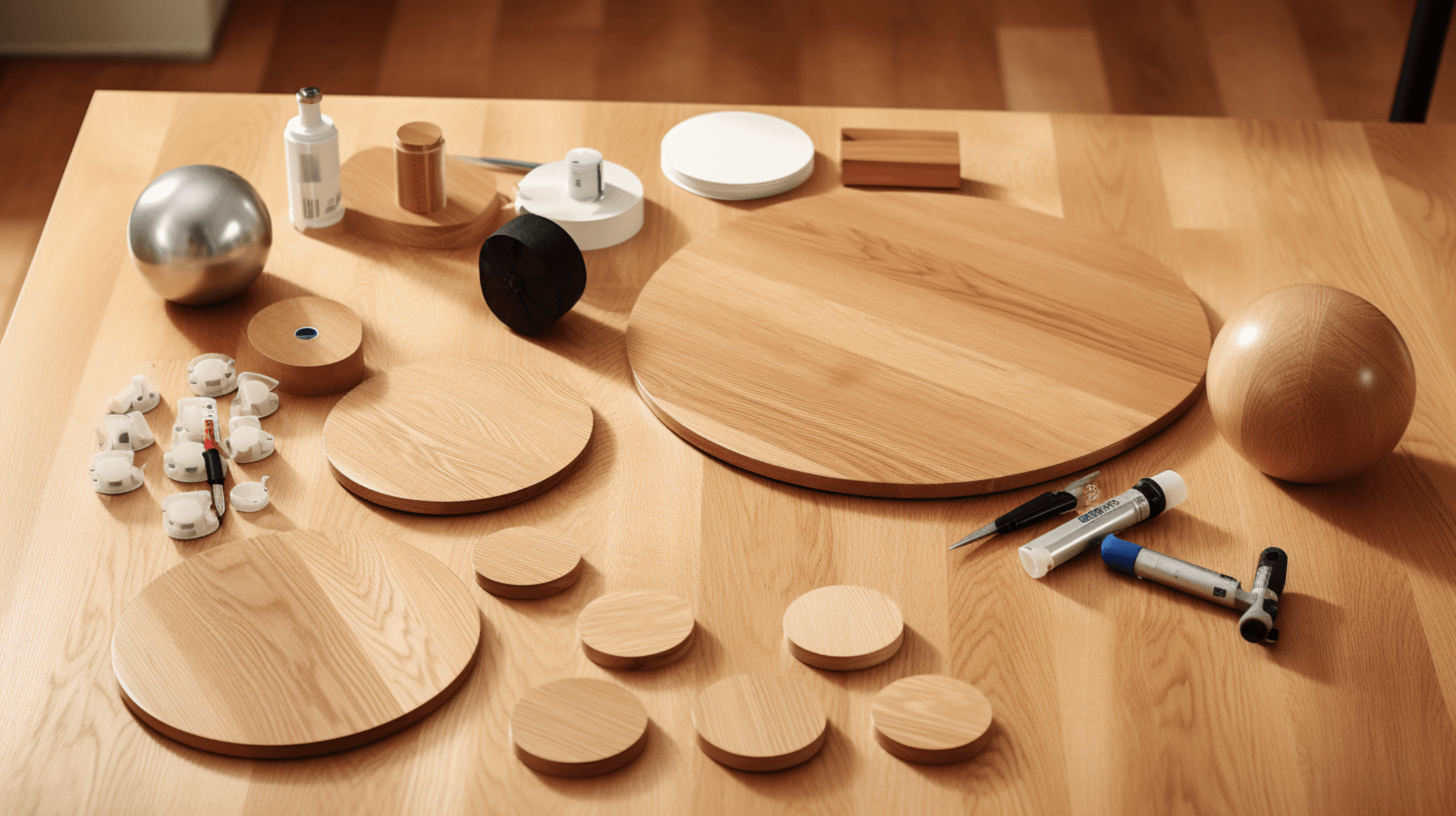
Repairing Table Leg Scratches on Wooden Floors: A Comprehensive Guide
Repairing table leg scratches on wooden floors can be a daunting task, but with the right materials and techniques, it can be done quickly and easily. The best methods for repairing table leg scratches on wooden floors depend on the severity of the scratches. For minor scratches, a simple buffing and polishing can restore the look and value of the floor. For deeper scratches, a more involved repair process may be necessary.
For minor scratches, the materials needed are a soft cloth, a buffing pad, and a wood polish. Start by wiping the scratched area with a soft cloth to remove any dirt or debris. Then, use a buffing pad to gently buff the scratched area. Finally, apply a wood polish to the area to restore the shine and luster of the floor.
For deeper scratches, the materials needed are a wood filler, a putty knife, sandpaper, and a wood finish. Start by filling the scratched area with a wood filler, using a putty knife to spread it evenly. Once the filler has dried, use sandpaper to smooth the area. Finally, apply a wood finish to the area to restore the look and value of the floor.
When repairing table leg scratches on wooden floors, it is important to consider the severity of the scratches and choose the appropriate repair method. Minor scratches can often be buffed and polished, while deeper scratches may require filling and refinishing. By following these repair methods and using the right materials, you can effectively restore the look and value of your wooden floor.
The Role of Regular Maintenance in Protecting Wooden Floors from Scratches

Regular cleaning and maintenance are essential for protecting wooden floors from scratches. Dirt and debris can accumulate on the floor, creating an abrasive surface that can cause scratches. Vacuuming or sweeping the floor regularly to remove dirt and debris can help reduce the risk of scratches. Additionally, furniture should be moved regularly to prevent the same area of the floor from being scratched repeatedly and should be placed away from walls and doorways to reduce the risk of scratches.
Recommended cleaning and maintenance practices for wooden floors include vacuuming or sweeping the floor regularly to remove dirt and debris, and using a damp mop to clean the floor. It is important to avoid using excessive water when cleaning, as this can damage the wood. Additionally, furniture should be placed away from walls and doorways to reduce the risk of scratches, and leave room for expansion around the edges of each room.
Professional maintenance services can also help in preserving wooden floors. Professional floor treatments, such as waxing, polishing, and sealing, can help prevent scratches and keep the floor looking new. Additionally, professional furniture pads and coasters can be used to provide an extra layer of protection. These pads and coasters are specifically designed to cushion the furniture legs and reduce friction, preventing scratches on the wooden floor.
By following these cleaning and maintenance practices and opting for professional services, home and business owners can ensure that our wooden floors remain in good condition and retain our aesthetic value. Taking preventive measures and regularly maintaining the floor can help reduce the risk of table leg scratches and maintain the beauty and value of the wooden floor.
Expert Advice on Protecting Wooden Floors from Table Leg Scratches
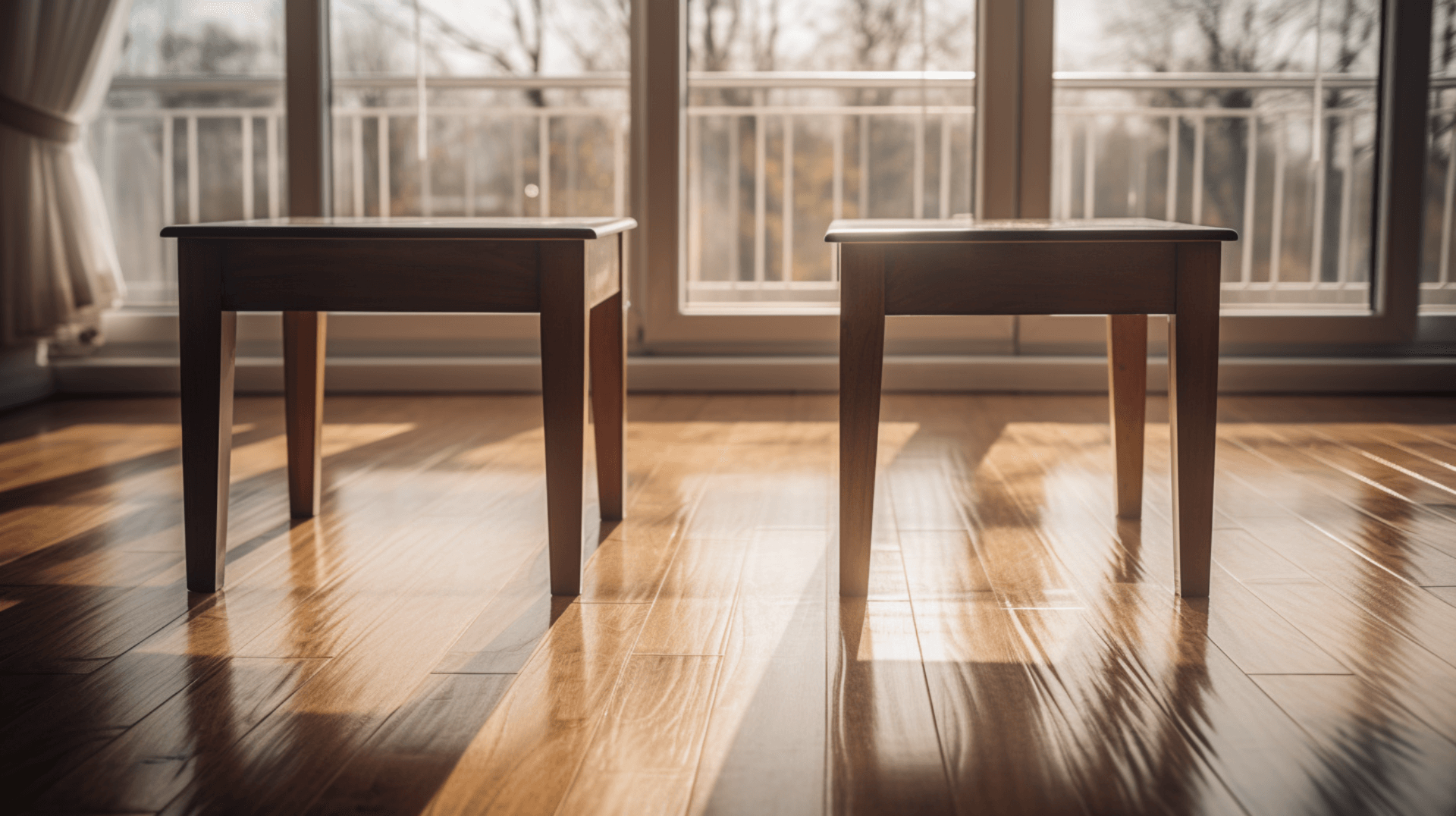
Experts recommend a variety of solutions for protecting wooden floors from table leg scratches. Furniture pads or glides should be used on the legs of tables and chairs to reduce friction between the furniture and the floor, preventing scratches. Regularly checking the condition of the pads or glides and replacing them as needed is also essential to maintain the protection of the wooden floor. Furniture should also be placed away from walls and doorways to reduce the risk of scratches, and leave room for expansion around the edges of each room.
GJP Floor Sanding offers a range of services to help protect and maintain wooden floors. Our experienced team can provide professional floor treatments, such as waxing, polishing, and sealing, to help prevent scratches and keep the floor looking new. We also offer professional furniture pads and coasters to provide an extra layer of protection. Additionally, our team can provide advice and guidance on the best methods for insulating a suspended timber floor, helping to reduce issues of cold bridging and unwanted moisture movement in voids.
GJP Floor Sanding offers unique solutions for scratch prevention and repair. Our team can provide advice on the best materials for protecting wooden floors, such as rubber pads for hardwood floors and felt pads for softwood floors. We can also provide guidance on maintaining the humidity and temperature levels in the room to prevent excessive shrinkage or swelling of the wooden floor. With our expertise, GJP Floor Sanding can help home and business owners effectively protect and maintain our wooden floors, ensuring our longevity and aesthetic appeal.
Contact GJP Floor Sanding for Professional Wooden Floor Protection and Maintenance

Contact GJP Floor Sanding for Professional Wooden Floor Protection and Maintenance
GJP Floor Sanding is your go-to professional flooring company for protecting and maintaining your wooden floors. With our range of services and expertise, we can help you prevent table leg scratches and ensure the longevity and aesthetic appeal of your wooden floors.
GJP Floor Sanding offers a variety of services to protect your wooden floors from table leg scratches. Our experienced team can provide professional floor treatments, such as waxing, polishing, and sealing, which create a protective layer to prevent scratches and keep your floor looking new. We also offer professional furniture pads and coasters that provide an extra layer of protection for your furniture legs, reducing friction and minimizing the risk of scratches.
In addition to these services, GJP Floor Sanding can provide advice and guidance on the best methods for insulating a suspended timber floor. This helps reduce issues of cold bridging and unwanted moisture movement in voids, which can potentially lead to damage and scratches on your wooden floor.
To contact GJP Floor Sanding for a consultation or service request, simply reach out to our team. You can visit our website or give us a call to discuss your specific needs and schedule an appointment. Our friendly and knowledgeable staff will be happy to assist you in protecting and maintaining your wooden floors. With our expertise and comprehensive range of services, GJP Floor Sanding is the perfect choice for all your wooden floor protection and maintenance needs.
